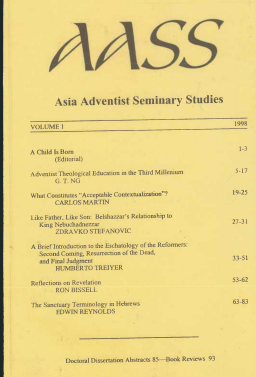What Constitutes "Acceptable Contextualization"?
Abstract
A central problem of missions is how to communicate the gospel across sociocultural barriers so that it becomes alive in the hearts of people in the receiving culture. This problem is sometimes expressed in the form of questions: How should new converts relate to their cultural past-to the food, dress, medicines, songs, dances, myths, rituals, and all such that were so much a part of their lives before they heard the gospel? How far can the gospel be adapted to fit into a culture without losing its essential message?
Christians have adopted different views concerning the tension between gospel and culture. Some hold the view that culture and historical circumstances have priority over the gospel. Others will compromise a balance of influences between the gospel and culture, some emphasizing more, others less. Still others, Seventh-day Adventists (SDAs) among them, believe that the gospel must survive intact any attempt at accommodation and contextualization.
Missiologists created terms such as "accommodation" and "contextualization" to describe the interaction between gospel and culture. A major difficulty is that groups having different philosophies of mission use the same terms, thus creating
confusion.
In this paper "accommodation" is the presentation of the gospel using local forms in order to produce the greatest impact on a given society. Sometimes accommodation and contextualization are called indigenization. However, I prefer
to see indigenization as the whole process by which the gospel becomes relevant to a local culture. One major difference between accommodation and contextualization is that accommodation is done by outsiders (also called "advocates"), while contextualization is done by insiders (also called "innovators"). Accommodation in this case is indispensable as a first step, while contextualization will be a further development.

